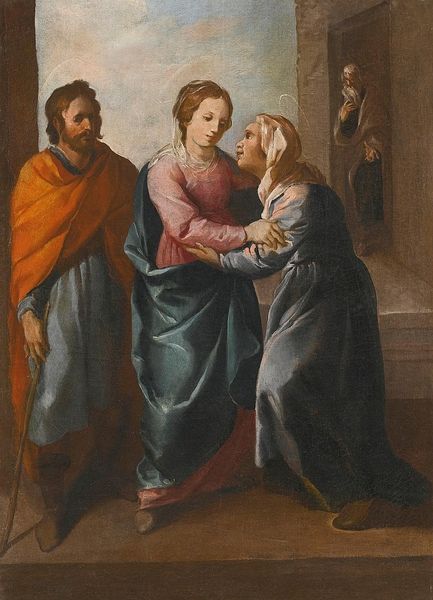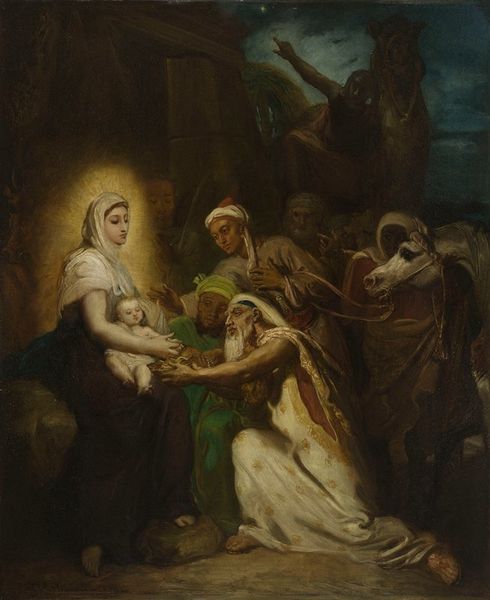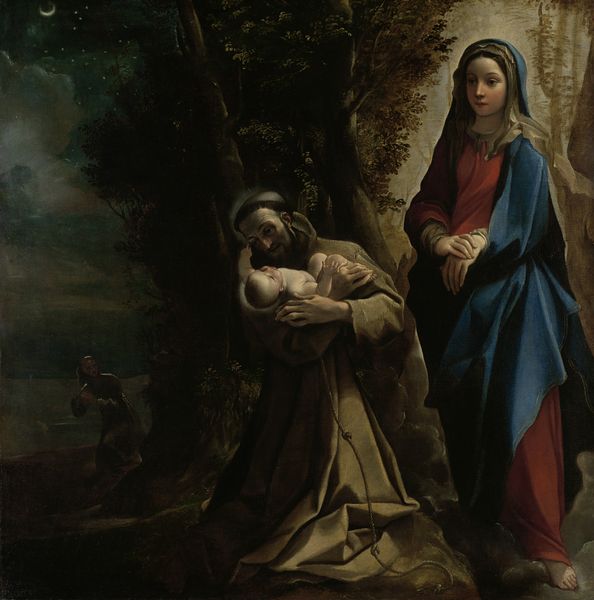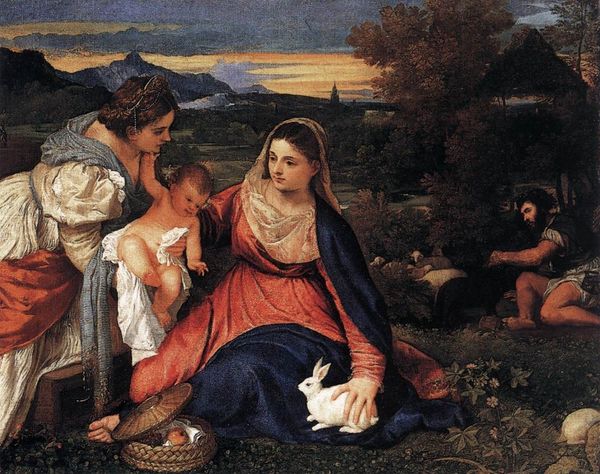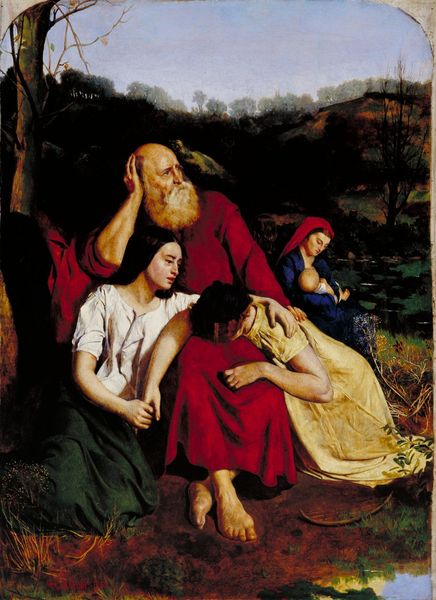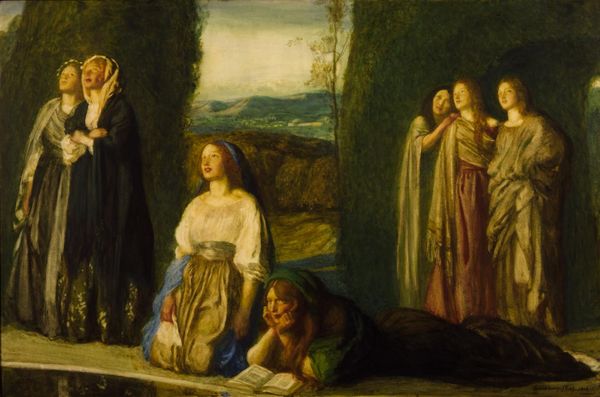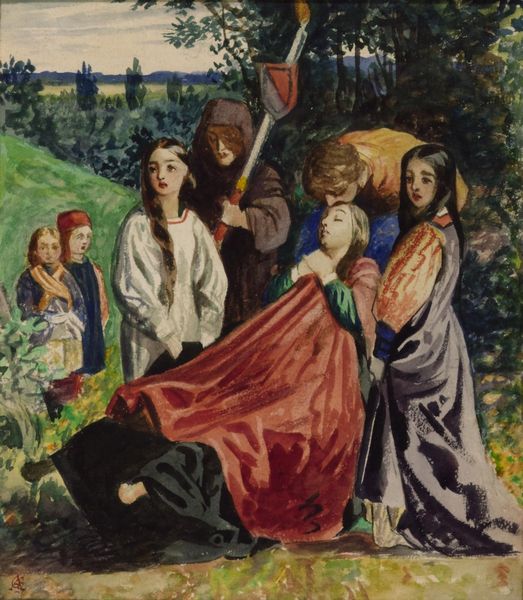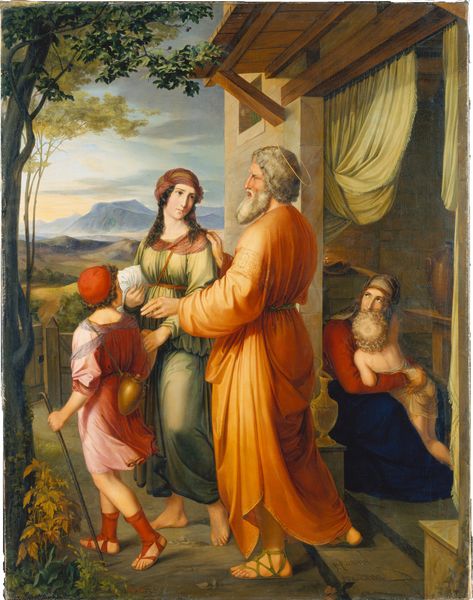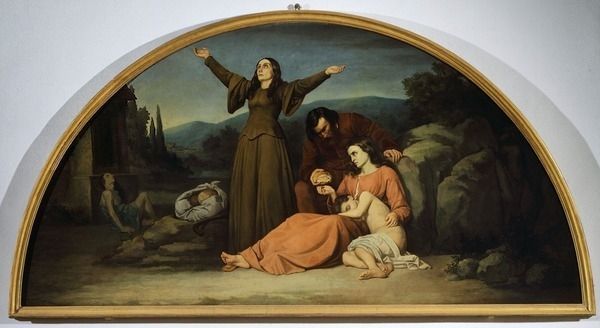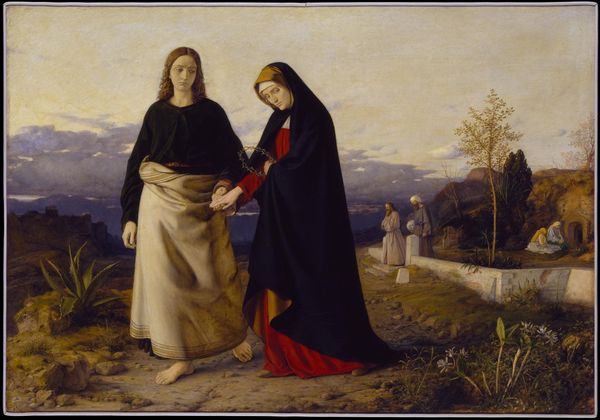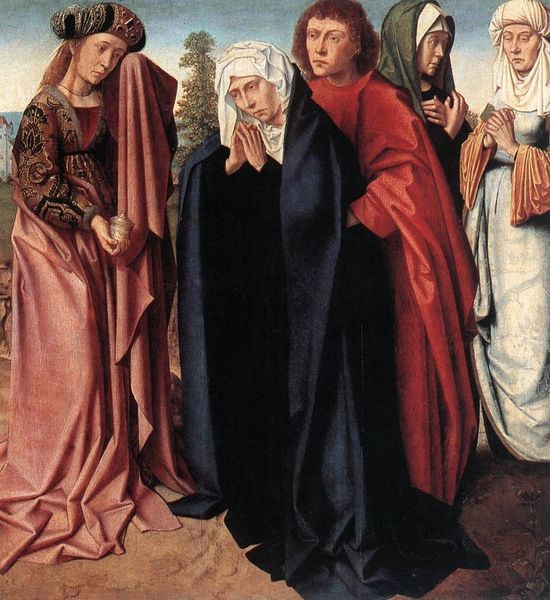
painting, oil-paint
#
portrait
#
painting
#
oil-paint
#
landscape
#
figuration
#
oil painting
#
portrait drawing
#
history-painting
Copyright: Public Domain: Artvee
Editor: Here we have Józef Simmler's 1864 oil painting, "Sketch to the Painting ‘Three Marys Walking to Christ’s Tomb’." There's such a feeling of somber movement, like they're carrying grief itself as they traverse this landscape. What story do you think this sketch tells through its symbolism? Curator: It is a study, indeed, heavy with symbols of mourning and perhaps dawning hope. Look at the positioning of the figures. Their downward gaze, the obscured faces – they all point to a collective grief. Yet, the landscape is not barren. Notice that even in their sorrow, there's a suggestion of rebirth: faint signs of new growth, the presence of dawn... Could this be indicative of resilience? Editor: Yes, the almost imperceptible light does give a sense of something beyond the immediate sadness. The oil paint adds texture too, and gives each figure so much weight, anchoring them to this earthly space. The crosses on the hilltop further ground the painting's narrative to Christian history and art tradition. How does that imagery contribute? Curator: The crosses definitely solidify the narrative. But notice, also, the almost ghostly rendering. Simmler masterfully uses that slight blur to denote the spiritual dimension. This blend suggests not just memory, but a cultural echo—of repeated loss and hope, ingrained in our very perception. Editor: So it’s about the enduring emotional resonance, reflected through historical and visual cues? It's interesting how one image holds so much history. Curator: Precisely. Simmler has given us access to layers of memory—both personal and collective. That sketch transcends a mere historical painting, revealing deeper symbolic dimensions of shared human experience.
Comments
No comments
Be the first to comment and join the conversation on the ultimate creative platform.
